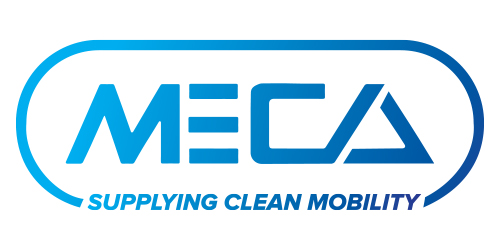Washington, D.C. – MECA congratulates the companies that gave rise to the clean mobility evolution as we commemorate the 50th anniversary of the invention of advanced emission control technology for passenger vehicles, when a handful of suppliers began selling the substrates, mixed oxide coatings, precious metals, and metal housings that make up a catalytic converter on a passenger car. In 1975, removing the lead from gasoline helped make catalytic converters more durable over the vehicle’s life.
The U.S. motor vehicle emission control program has rightly earned the reputation as one of the world’s great environmental success stories. Today, harmful pollutant emissions from new cars equipped with the latest U.S. EPA-/California ARB-compliant advanced emission control systems emit 99+ percent less pollution compared to comparable vehicles without any controls in the 1960s.
As a result, the ambient air we breathe is much cleaner than it was 50 years ago. Of equal importance, the strategies and technologies achieving these pollution reductions have contributed to a significant increase in fuel economy and allowed automakers to continue to provide high-performance vehicles to the driving public.
The centerpiece of this successful program has been the advanced clean mobility technology that emerged 50 years ago beginning with catalytic converters and evolving to provide increasingly cleaner vehicles. Key components of this technology also include:
- on-board computers and sensors
- advanced engine controls
- electronically controlled engines
- carbon canister and low fuel permeation materials used to control evaporative and refueling emissions.
Indeed, since 1974, more than one billion vehicles worldwide have been equipped with these advanced control systems, reducing tens of billions of tons of pollution.
Originally designed for gasoline-fueled automobiles, catalytic converters are now being equipped on vehicles operating on diesel, natural gas, ethanol, methanol, and propane, and in a range of other mobile source applications, including lawn and garden equipment, heavy-duty trucks and buses, construction equipment, locomotives, and marine vessels.
In addition, once regulated pollutants have been expanded to include carbon dioxide, the portfolio of products being developed and commercialized by clean mobility suppliers has expanded to include technologies that reduce greenhouse gas emissions through efficient and electrified powertrains, including hybrids and batteries, as well as fully electric or hydrogen- powered vehicles and all the powertrain components that allow these vehicles to eliminate emissions completely at the tailpipe.
“Advanced clean mobility technology has been a cornerstone in our nation’s continuing efforts to clean up the air we breathe,” according to Rasto Brezny, MECA’s Executive Director. “However, despite all the progress in reducing pollution, over 85 million Americans still live in areas that do not meet the federal ambient air quality standards, so our job is not yet done. Furthermore, the need to meet new standards to reduce GHG emissions will require the deployment of robust cost-effective and fuel efficient electric and hydrogen powertrains. MECA and our member companies look forward to working with regulators, our industry partners, the environment and public health communities, and others to address these challenges, both here in the U.S. and worldwide.”
